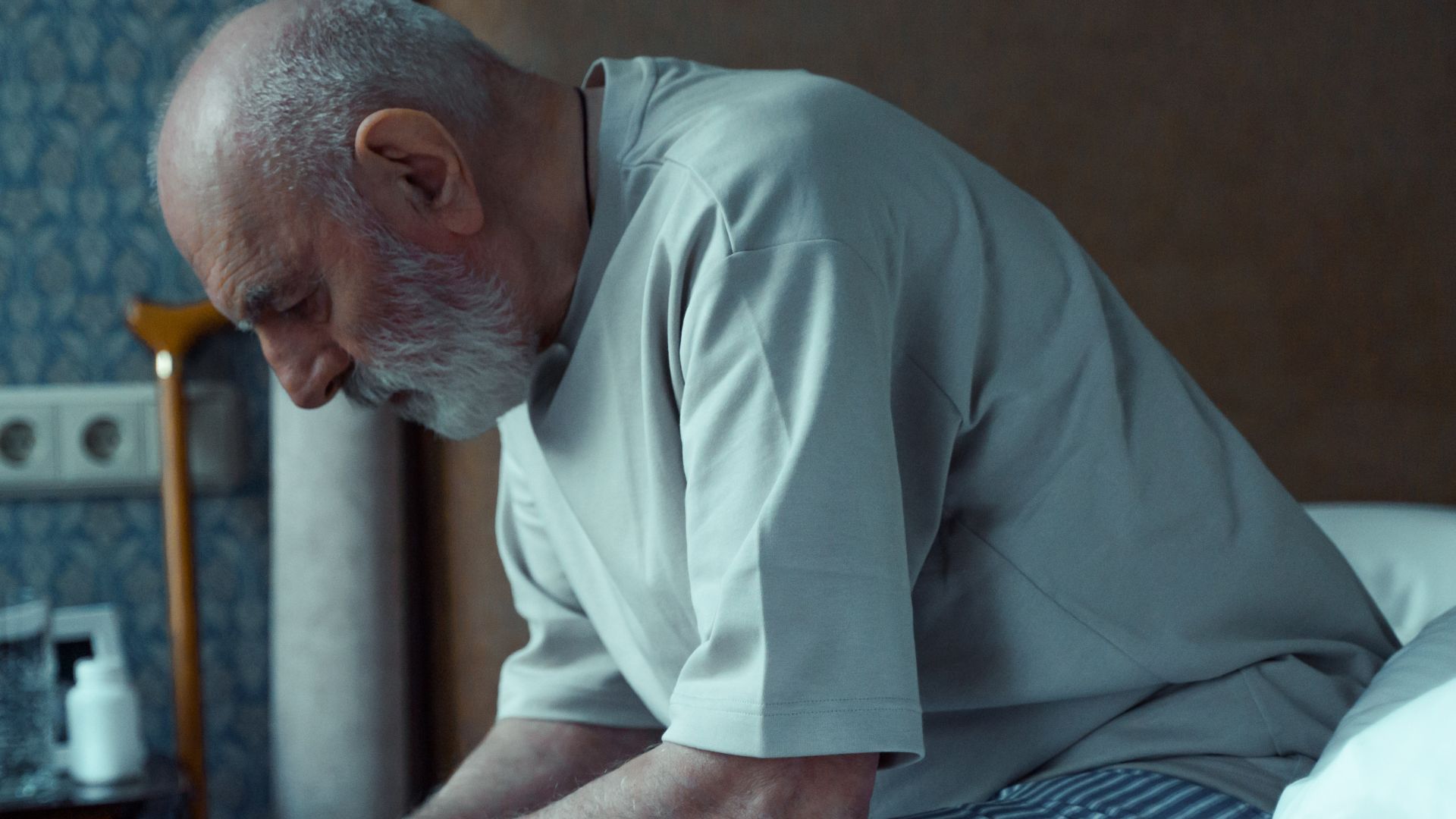
Revealing the Hidden Needs of Care Home Residents: How AI Monitoring Can Enhance Resident Well-being
In today’s care environments, supporting residents means looking beyond visible symptoms and addressing the needs that often go unnoticed. Many of these needs from subtle changes in mobility to disrupted sleep can be missed for days or weeks, especially when residents struggle to communicate or choose not to mention them. Without timely action, these hidden issues can quickly affect health, safety, and quality of life.
The good news is the increasing adoption of AI resident monitoring technology like Ally is stepping up to tackle these gaps in care by detecting unseen signs of discomfort, pain, or distress, which helps deliver outcomes more aligned with residents’ real needs.
When residents don’t want to be a burden
One of the less visible challenges in resident care is a reluctance among some residents to ask for assistance, despite needing help. Many residents worry that their requests might overburden busy carer teams or prefer to appear self-sufficient. This tendency, while well-intentioned, can conceal underlying issues that, left unaddressed, may worsen over time. For example, a resident may choose not to report a new pain or mobility challenges, hoping the symptoms will either subside or disappear on their own. In practice, this decision can delay any necessary intervention and remedial measures to be put in place leading to preventable issues starting to escalate.
In this situation, AI monitoring technology serves as a silent aid that helps staff to bridge this communication gap. Rooms equipped with acoustic and motion sensors can identify unusual patterns, such as prolonged immobility or decreased movement, that might suggest a resident is struggling but hesitant to ask for help. When these insights are surfaced, carers can offer more proactive support, ensuring that even unspoken needs are acknowledged and addressed.
When residents choose not to disclose discomfort
Whether this is due to pride, fear of perceived weakness, or worry about future dependency, the behaviour of staying silent when all is not well is common among elderly residents. Research by the British Pain Society* highlights that elderly individuals may under-report pain or discomfort because they see it as an inevitable part of ageing. This under-reporting, however, makes it challenging for carers to intervene at the right time, potentially leading to delayed treatment or missed symptoms.
This is where AI monitoring technology can step in and add an extra layer of vigilance by picking up changes in a resident’s routine or physical status. If a normally active resident suddenly becomes more sedentary or if changes in vocalisations, like frequent coughing or calling out at night, are detected, these could signal a hidden health issue. By analysing subtle clues and deviations from usual behaviour, AI helps carers to respond in a timely and supportive way, sidestepping the common reluctance among residents to voice every concern.
For those who cannot articulate pain or discomfort
Residents who have difficulty communicating, due to conditions like dementia or physical limitations, often face significant challenges in conveying discomfort. They may be unable to express pain verbally, to press a call button, or to physically signal their needs. As a result, carers may struggle to detect these silent but pressing needs, which can lead to a rapid decline in the resident’s health and well-being.
This is where AI monitoring technology plays a vital role by helping to identify signs of discomfort without relying on verbal cues. Advanced systems can detect unusual patterns in a resident’s movement or vocalisations, even picking up subtle signs of distress such as restlessness or repeated sounds that might suggest pain, anxiety, or disturbed sleep. With the aid of these insights, carers can quickly respond to unexpressed needs, ensuring prompt and compassionate support.
When residents choose not to alert staff
It’s not uncommon for some residents to avoid using the nurse call system, even when they need assistance. This might be due to pride, a desire to maintain independence, or even prior experiences where they felt their request was less urgent compared to others. By refusing to press the call button, these residents may unintentionally compromise their own well-being.
To address this issue, AI-powered systems monitor changes in behaviour that might otherwise go unobserved. For instance, if a resident who normally moves around their room daily is found to be inactive for a prolonged period, the system can send an alert to staff. This kind of responsive monitoring allows carers to check in with residents who might otherwise endure discomfort in silence, ensuring that independence doesn’t come at the cost of well-being.
AI’s role in capturing unobserved needs
The integration of AI monitoring technology is transforming residential care by capturing a fuller picture of residents’ unobserved needs. Acoustic and motion sensors, alongside AI learning algorithms, make it possible to detect abnormalities that signal a departure from typical behaviour. For instance, AI can track changes in a resident’s sleep patterns, detect reduced physical activity, or identify shifts in breathing sounds that may suggest the onset of infections like urinary tract infections (UTIs) or respiratory conditions.
This technology not only picks up physical cues but also learns over time to recognise individual behavioural patterns. As the system learns it becomes increasingly adept at distinguishing between normal fluctuations and indicators of a potential issue. Knowing and understanding these details is crucial for care teams to provide tailored care, as they enable staff to anticipate and address residents’ needs before they escalate into more severe health problems.
Completing the care picture with person-centred care plans
As AI monitoring technology surfaces the unobserved side of resident needs, it helps care teams to craft and deliver more person-centered care plans. Traditional care models often rely on direct interaction for insights, limiting carers’ awareness to times when they are physically present with residents. However, when AI monitoring is in place, staff get a clearer, round-the-clock view of residents’ routines, behaviours, and potential needs, especially during the long hours when they may be alone in their rooms.
This level of monitoring means that carers can respond to changes more effectively, adapting care plans to suit each resident’s evolving needs. For instance, if a resident experiences disturbed sleep patterns, AI can flag this early, allowing staff to adjust the care plan to address underlying causes such as discomfort, anxiety, or health issues.
Positive outcomes: healthier, happier residents
The impact of AI monitoring on resident well-being is far-reaching. By proactively identifying and addressing unobserved needs, the technology helps to reduce the likelihood of hospital admissions and emergency interventions, which can be physically and emotionally taxing for elderly residents. It also fosters a more responsive care environment, where residents can feel confident that their well-being is prioritised, even in moments when they cannot express their needs.
Furthermore, this monitoring enhances residents’ quality of life by preserving their dignity and autonomy. The system’s ability to detect and respond to needs without constant physical check-ins allows residents to retain a sense of privacy and independence. Rather than feeling under constant observation, they can enjoy the reassurance that comes with knowing help is readily available, should they need it.
The result is a holistic care approach that values both independence and proactive support, creating a better overall experience for residents.
Meeting the future with compassionate technology
As AI technology continues to evolve, so too will the possibilities for enhancing resident care. The next steps in this journey are likely to involve deeper integration between AI monitoring systems and digital care records, allowing for even more comprehensive and connected care approaches. By combining these insights, carers will be better equipped to see the full picture of each resident’s health, making informed decisions based on a wealth of real-time and historical data.
In truth, AI-powered monitoring does more than just fill the gaps in traditional care models; it completes the care picture, helping to ensure that every resident’s needs are met with compassion, precision, and respect.
Source: https://www.britishpainsociety.org/static/uploads/resources/files/book_pain_in_older_age_ID7826.pdf
